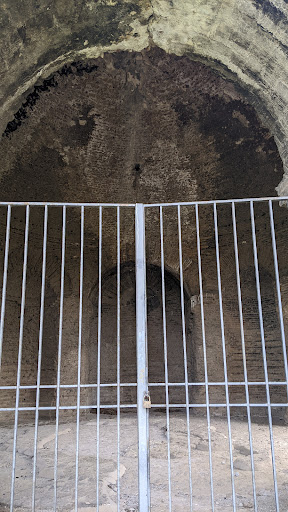This very valid and interesting archeological site is best appreciated with a local guide ( it is considered to be part of the attractions of Rome so it is possible to get a guide or group tour from Rome). I can’t give it a high vote because each time I go (frequently) there is always something not available ( public toilets at the entrance have been closed for ages, there is only one facility inside near the visitor centre) - the bar may or May mot be open at the entrance and you should enter with water and a snack if you are likely to get hungry as there are no facilities like that once inside the vast complex. Best time to visit in summer is early morning or late afternoon.
Travel time by road is 40-60 mins depending on traffic. Very difficult to reach by other means as it is quite isolated from the town of Tivoli ( about 30 mins from the train station if you could overcome language barriers and try to find a local taxi to take you). Allow 3 hours for a visit, take water! And stop first at the visitor centre once inside the entrance and after a 10 mon climb to the hilltop, to view the fabulous scale model of the estate which Emperor Hadrian designed and landscaped as his hobby, recreating and replicating in scale, corners of the Roman Empire that he loved. You can see the Ospitalia, or guards quarters, with fabulous mosaic paved cubiculae, the “maritime theatre” or private island where Hadrian would retreat to in privacy, his private baths or Heliocamino, 2 other guest bath houses, the hall of the exedrae, his reception areas of the Piazza d’Oro, the hall of the Doric pillars, even where his throne sat at the end of this hall ( if you know what to look for!) the Stadium, his ice box (!) and fresh fish ponds, and the Canopus, only one of his various tricliniums and banquet areas..here you can really feel the “ozium” or the luxury lifestyle of the rich and famous of the day! Imagine for a moment you are he or any of his successors, welcoming visitors to your country estate for a party, a dinner, a soak in the baths. And notice how the entire property was designed in layers so that servants and transportation of goods were always underground or behind walled corridors! Don’t expect to see what I have described in 3-D reality- the villa was pillaged over 4 centuries ago and has supplied many works to the Vatican Museums, but there is also a tiny museum on the property which holds a few worthwhile treasures, next to the Canopus. Usually I recommend a full day in a Tivoli with a lunch break at the Sibilla restaurant overlooking 2 roman temples including the Temple of the Sybil of Tibur and the famous cascades, followed by a fun visit to the 16th century Villa d’Este with its wonderful park and many water features including the water organ which plays at set...
Read moreA must visit place to explore the amazing villa from Roman times. During our visit to Rome I tried to visit but with travel limitations it did not work. And I did not realize how amazing this villa is until we visited it during Easter weekend. If you are a fan of history or even like to see the wonders of the Roman Empire this is a must do and with shuttle, travel options from Rome it can be easily organized if planned into the itinerary. There is a parking lot and it's not pricey. Restrooms and vending machines located near the entrance. In walking distance from the villa are coffee, food options. It's recommended to book tickets online and if not the waiting could take a little bit of time which is not too bad. Overall the tour can take 3 hours minimum with viewing all the historic remains in the villa grounds. It's a bit of a walk but there are plenty of shades, water refill options and it's best to take it slow and plan for a half day exploration considering the garden areas are amazing to relax. The map has route options and it's best to explore in a sequence so as not to miss anything. It is such a huge complex and one of the grandiose villas of Roman times. Roman engineering marvel can be seen in their thermal baths, palace natural lighting set up. One has to visit to see, enjoy and learn so much from...
Read moreStep into the ancient wonder of Hadrian's Villa—a UNESCO World Heritage Site that's like a time capsule of grandeur! Imagine this sprawling estate, a colossal villa complex built around 120 AD by none other than the Roman Emperor Hadrian himself. And get this—it's nestled near Tivoli, just a stone's throw away from Rome! Well, not really stone's throw but 1.5 hour bus ride from Rome. Reminds me of our other trip to Tuscany for dinner.
This place isn't your average villa—it's the OG of Roman opulence. Picture the grandeur, the sheer scale of this sprawling marvel. We're talking about the most mind-blowing and intricate Roman villa ever discovered. Hadrian wasn't messing around when he built this masterpiece. He wanted to show his power and affluence.
From stunning ruins to archaeological treasures, every corner holds a piece of history that'll transport you back to the glory days of ancient Rome. It's like stepping into a time machine and landing smack dab in the middle of Hadrian's lavish lifestyle. I can't imagine what stories could be told if the this villa can talk.
Hadrian's Villa isn't just a site—it's a testament to the grand ambitions and architectural prowess of an emperor. So, are you ready to wander through the echoes of an empire's past? You should and become part of history before it...
Read more

